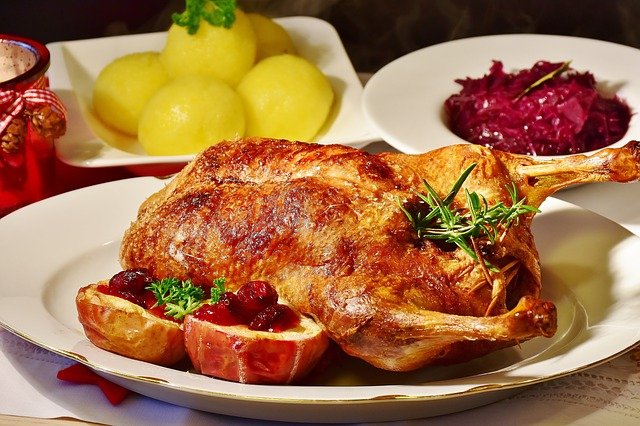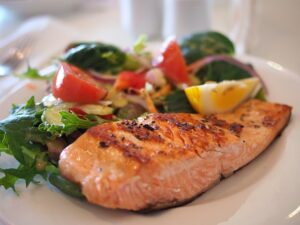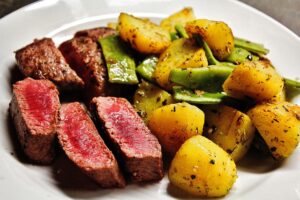Introduction
Eating an adequate amount of protein is essential for maintaining a healthy diet and supporting various bodily functions. Many individuals aim to consume around 180 grams of protein per day to meet their fitness goals or dietary needs. In this article, we will explore different strategies and food sources that can help you achieve this protein intake.
Calculating Your Protein Needs
Before diving into the specifics, it’s important to determine how much protein you need based on your individual circumstances. The recommended daily protein intake varies depending on factors such as age, sex, weight, and activity level. A general guideline is to consume 0.8 grams of protein per kilogram of body weight. However, for those who engage in intense physical activity or strength training, a higher protein intake may be necessary.
Food Sources of Protein
To consume 180 grams of protein a day, it’s crucial to incorporate a variety of protein-rich foods into your diet. Here are some excellent sources of protein:
1. Lean Meats: Chicken breast, turkey, lean beef, and pork are all high in protein. Aim for lean cuts to minimize saturated fat intake.
2. Fish and Seafood: Fish like salmon, tuna, and cod, as well as shellfish like shrimp and scallops, are not only rich in protein but also provide essential omega-3 fatty acids.
3. Eggs: Eggs are a versatile and affordable source of protein. They can be enjoyed in various ways, such as scrambled, boiled, or in omelets.
4. Dairy Products: Milk, cheese, yogurt, and cottage cheese are all excellent sources of protein. Opt for low-fat or Greek yogurt for added health benefits.
5. Legumes: Beans, lentils, chickpeas, and other legumes are not only high in protein but also provide fiber and other essential nutrients.
6. Nuts and Seeds: Almonds, walnuts, chia seeds, and hemp seeds are examples of protein-rich nuts and seeds. They also offer healthy fats and micronutrients.
7. Tofu and Tempeh: These plant-based protein sources are popular among vegetarians and vegans. They can be used in a variety of dishes and offer a complete protein profile.
Meal Planning and Distribution
To reach your daily protein goal, it’s important to plan your meals and distribute protein intake throughout the day. Here are some strategies to consider:
1. Prioritize Protein at Each Meal: Ensure that every meal contains a significant protein source. This could be a lean meat, fish, eggs, or plant-based protein.
2. Snack on Protein-Rich Foods: Incorporate protein-rich snacks like Greek yogurt, cottage cheese, or protein bars into your daily routine.
3. Protein Shakes or Smoothies: Supplementing with protein shakes or smoothies can be an effective way to increase your protein intake. Use protein powder made from high-quality sources.
Conclusion
Consuming 180 grams of protein per day is achievable with proper planning and a well-balanced diet. Remember to calculate your individual protein needs, incorporate a variety of protein-rich foods, and distribute protein intake throughout the day. It’s always a good idea to consult with a healthcare professional or registered dietitian to personalize your protein intake based on your specific needs and goals.
References
– Mayo Clinic: mayoclinic.org
– Healthline: healthline.com
– Academy of Nutrition and Dietetics: eatright.org












